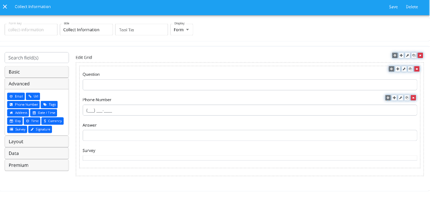In the fast-paced world that companies need to dwell today, the demand for agile, scalable, and...
Open-Source vs Proprietary Workflow Automation: Which is Right for You?
 Choosing the Right Path to Automation
Choosing the Right Path to Automation
As businesses increasingly rely on automation to streamline operations and scale sustainably, the question is no longer if you should automate, but how.
One of the first key decisions when evaluating workflow automation platforms is whether to adopt an open-source or a proprietary solution. Both have unique advantages and limitations depending on your company’s goals, technical expertise, and budget.
In this article, we’ll help you make a well-informed choice by breaking down the core differences, use cases, and strategic implications of choosing open-source workflow software versus proprietary tools.
What Is Workflow Automation?
Workflow automation involves digitizing and orchestrating business processes to improve speed, accuracy, and transparency. Whether it’s onboarding employees, managing service requests, or handling approvals, automation eliminates manual tasks and enforces consistency across the board.
Choosing the right business efficiency tools ensures your automation strategy is sustainable, scalable, and secure, making the open-source vs proprietary decision a foundational one.
Open-Source Workflow Software: Flexibility Meets Control
Open-source workflow tools are platforms with publicly accessible source code that users can customize and deploy according to their specific needs. These tools often thrive within a community-driven ecosystem and allow a high level of freedom.
✅ Benefits of Open-Source:
- Customization and Adaptability: Modify features, integrate with other tools, and adapt workflows to your exact business logic.
- Cost-Effective: Typically, free to use, with optional costs for hosting, support, or enterprise services.
- No Vendor Lock-In: You're not tied to a single vendor’s roadmap or pricing model.
- Community Support and Innovation: Benefit from peer contributions, frequent updates, and transparent development practices.
- Security by Design: While open to scrutiny, vulnerabilities are also quickly identified and patched by the community.
🔍 Considerations:
- In-House Expertise Required: Requires technical know-how or a reliable implementation partner.
- Longer Time to Deploy (initially): More configuration upfront, especially for complex environments.
- Support Variability: Unless you choose a vendor-backed open-source solution like WKS, support may depend on community forums.
Proprietary Workflow Automation Tools: Simplicity with Limitations
Proprietary software refers to closed-source platforms sold by commercial vendors. These tools are typically polished, feature-rich out of the box, and designed for quick deployment.
✅ Benefits of Proprietary Tools:
- Quick Setup: Ideal for teams with limited IT resources or immediate deployment needs.
- Vendor Support: Access to training, SLAs, and dedicated customer service.
- User-Friendly Interfaces: Designed for non-technical users with drag-and-drop builders, templates, and guided workflows.
🔍 Considerations:
- Limited Flexibility: Customizing logic or integrations beyond what’s offered may not be possible.
- Higher Costs Over Time: Subscriptions, user licensing, and add-ons can significantly increase TCO (Total Cost of Ownership).
- Risk of Vendor Lock-In: You may be bound to the proprietary infrastructure, support, and upgrade cycles.
- Data Control: Data is often stored on the vendor's cloud with limited visibility or migration options.
Comparison Table: Open-Source vs Proprietary
|
Feature/Factor |
Open-Source Workflow Software |
Proprietary Workflow Tools |
|
Cost |
Low to moderate (mostly infra or support) |
Subscription or licensing fees |
|
Customization |
High: fully adaptable |
Low to moderate: limited to options provided |
|
Security & Data Ownership |
Full control |
Depends on vendor policies |
|
Community-driven or enterprise partner |
Depends on vendor support |
|
|
Vendor Lock-In |
None |
High |
When to Choose Open-Source Workflow Automation
You should consider open source if:
- You need a highly custom or industry-specific workflow logic.
- You want full control over your data and platform evolution.
- You have in-house development resources or an IT partner.
- You want to avoid recurring license costs and scale affordably.
WKS, for example, is an open-source platform built for adaptability, ideal for public sector bodies, fintech startups, and mid-market businesses that need security, flexibility, and integration freedom.
When to Choose Proprietary Workflow Software
You might prefer a proprietary tool if:
- You have a small team with no internal tech support.
- You need a plug-and-play solution with minimal setup.
- You’re focused on short-term wins over long-term scalability.
- You're willing to give up flexibility.
Hybrid Models: The Best of Both Worlds?
Some organizations opt for vendor-backed open-source solutions, like WKS, which combine the transparency and flexibility of open-source with the professional support and usability of commercial software. These hybrid models offer a middle ground for companies seeking control and guidance.
Conclusion: Think Strategy, Not Just Features
Choosing between open-source and proprietary workflow automation isn’t just about the interface, it’s about aligning your tools with your long-term business strategy.
If your goals include agility, ownership, and tailored processes, open-source workflow software offers a scalable, future-proof path. If you need a quick fix with built-in guardrails, proprietary tools may serve your needs in the short term.
At WKS, we help businesses design flexible, powerful, and sustainable automation strategies that grow with them. Whether you’re starting your digital transformation or refining an existing tech stack, we’re here to support your next step.
👉 Schedule a demo or contact us to see how WKS helps organizations achieve true automation freedom.



